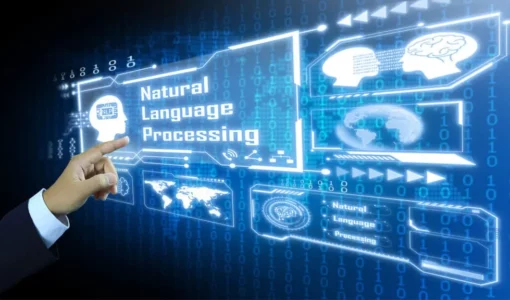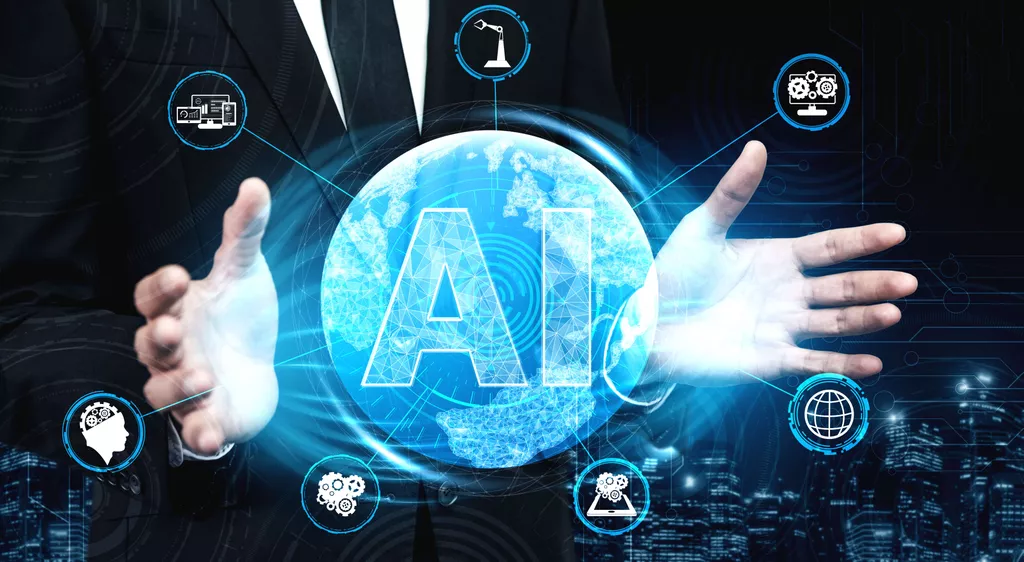A research paper on deep learning-based image recognition highlights how it is being used detection of crack and leakage defects in metro shield tunnels. Other machine learning algorithms include Fast RCNN (Faster Region-Based CNN) which is a region-based feature extraction model—one of the best performing models in the family of CNN. Artificial neural networks identify objects in the image and assign them one of the predefined groups or classifications. In order to improve the accuracy of the system to recognize images, intermittent weights to the neural networks are modified to improve the accuracy of the systems. When it comes to identifying images, we humans can clearly recognize and distinguish different features of objects. This is because our brains have been trained unconsciously with the same set of images that has resulted in the development of capabilities to differentiate between things effortlessly.
- At Jelvix, we develop complete, modular image recognition solutions for organizations seeking to extract useful information and value from their visual data.
- This allows the algorithm to identify features in the image that are important for recognizing the object or scene in the image.
- You can train the system to map out the patterns and relations between different images using this information.
- One of the most promising AI techniques for image recognition is stable diffusion AI.
- The matrix is reduced in size using matrix pooling and extracts the maximum values from each sub-matrix of a smaller size.
- Today, image recognition is used in various applications, including facial recognition, object detection, and image classification.
Developers can now use image recognition to create realistic game environments and characters. Various non-gaming augmented reality applications also support image recognition. Examples include Blippar and CrowdOptics, augmented reality advertising and crowd monitoring apps. While the object classification network can tell if an image contains a particular object or not, it will not tell you where that object is in the image. Object detection networks provide both the class of objects contained in a picture and the bounding box that provides the object coordinates. Object detection is the first task performed in many computer vision systems because it allows for additional information about the detected object and the place.
The AI Revolution: From Image Recognition To Engineering
The reality is AI startups are cropping up everywhere to solve problems for every business out there, lessening the information load necessary to succeed. Object recognition technology is used in many fields, such as security, human resources of companies, public relations and advertising, banking services, healthcare, and robotic vision systems. One of the areas where this technology is used is autonomous vehicle technology. Deep learning technologies offer many solutions that can enhance different aspects of the educational process. Currently, online lessons are common, and in these circumstances, teachers can find it difficult to track students’ reactions through their webcams.
In the first step of AI image recognition, a large number of characteristics (called features) are extracted from an image. An image consists of pixels that are each assigned a number or a set that describes its color depth. Treating patients can be challenging, sometimes a tiny element might be missed during an exam, leading medical staff to deliver the wrong treatment. To prevent this from happening, the Healthcare system started to analyze imagery that is acquired during treatment. X-ray pictures, radios, scans, all of these image materials can use image recognition to detect a single change from one point to another point. Detecting the progression of a tumor, of a virus, the appearance of abnormalities in veins or arteries, etc.
AI applications in diagnostic technologies and services
Cloud-based image recognition will allow businesses to quickly and easily deploy image recognition solutions, without the need for extensive infrastructure or technical expertise. But it is business that is unlocking the true potential of image processing. According to Statista, Facebook and Instagram users alone add over 300,000 images to these platforms each minute.

For example, it can be used to detect fraudulent credit card transactions by analyzing images of the card and the signature, or to detect fraudulent insurance claims by analyzing images of the damage. Furthermore, each convolutional and pooling layer contains a rectified linear activation (ReLU) layer at its output. The ReLU layer applies the rectified linear activation function to each input after adding a learnable bias. The rectified linear activation function itself outputs its input if the input is greater than 0; otherwise the function outputs 0.
Image Recognition Algorithms
Research the market, define a roadmap for your project, choose APIs, and decide how exactly you are going to incorporate image recognition and related technologies into your future app. What you should know is that an image recognition software app will most probably use a combination of supervised and unsupervised algorithms. The final question I wondered about is how AIs can get such a vast amount of data. Some AI’s only have access to what the computer scientists give to them.

The algorithm will compare the extracted features of the unknown image with the known images in the dataset and will then output a label that best describes the unknown image. Image recognition is a process of identifying and detecting an object or a feature in a digital image or video. It can be used to identify individuals, objects, locations, activities, and emotions. This can be done either through software that compares the image against a database of known objects or by using algorithms that recognize specific patterns in the image. Present-day image recognition is comparable to human visual perception.
Image Recognition in the Real World
Thanks to deep learning approaches, the rise of smartphones and cheaper cameras have opened a new era of image recognition. Deep Learning, a subcategory of Machine Learning, refers to a set of automatic learning techniques and technologies based on artificial neural networks. The networks in Figure (C) or (D) have implied the popular models are neural network models. Convolutional Neural Networks (CNNs or ConvNets) have been widely applied in image classification, object detection, or image recognition. Determining the best approach for object recognition between these two approaches depends on your application and the problem you want to solve.
Fueling Change: The Power of AI and Market Data in Transforming … – J.D. Power
Fueling Change: The Power of AI and Market Data in Transforming ….
Posted: Thu, 08 Jun 2023 17:01:20 GMT [source]
So, if a solution is intended for the finance sector, they will need to have at least a basic knowledge of the processes. Now, these images are considered similar to the regular neural network process. The computer collects the patterns and relations concerning the image and saves the results in matrix format. The pooling layer helps to decrease the size of the input layer by selecting the average value in the area defined by the kernel. Depending on the type of information required, you can perform image recognition at various levels of accuracy.
Image Recognition APIs: Google, Amazon, IBM, Microsoft, and more
Human sight has the advantage of lifetimes of context to train how to tell objects apart, how far away they are, whether they are moving and whether there is something wrong in an image. The main advantage of metadialog.com using stable diffusion AI in image recognition is that it is more reliable than traditional methods. Traditional methods rely on manually labeling images, which can be time-consuming and prone to errors.
How does AI image enhancement work?
Deep-image.ai works by analyzing your photos and then making subtle adjustments to them in order to improve their overall quality. The end result is a photo that looks better than if it had been edited by a human, and all without you having to do anything other than upload your photo into the Deep-image.ai platform.
Thus, the standard AlexNet CNN was used for feature extraction rather than using CNN from scratch to reduce time consumption during the training process. The classification method (also called supervised learning) uses a machine-learning algorithm to estimate a feature in the image called an important characteristic. It then uses this feature to make a prediction about whether an image is likely to be of interest to a given user. The machine learning algorithm will be able to tell whether an image contains important features for that user.
What Is Data Analytics? [Beginner’s Guide 2023]
It is used by many companies to detect different faces at the same time, in order to know how many people there are in an image for example. Face recognition can be used by police and security forces to identify criminals or victims. Face analysis involves gender detection, emotion estimation, age estimation, etc.
- Computers interpret every image either as a raster or as a vector image; therefore, they are unable to spot the difference between different sets of images.
- The iterative process of “convolution-normalization-activation function-pooling-convolution again…” can repeat multiple times, depending on the neural network’s topology.
- Customers can search for products by uploading images, allowing the system to identify similar items.
- Stable diffusion AI is a type of AI algorithm that uses a process called “diffusion” to recognize patterns in images.
- The feature map is then passed to “pooling layers”, which summarize the presence of features in the feature map.
- It’s worth mentioning this large image database ImageNet that you can contribute to or download for research purposes.
So, nodes in each successive layer can recognize more complex, detailed features – visual representations of what the image depicts. Such a “hierarchy of increasing complexity and abstraction” is known as feature hierarchy. OK, now that we know how it works, let’s see some practical applications of image recognition technology across industries.
How does image recognition work?
As such, it is an ideal AI technique for a variety of applications that require robust image recognition. From facial recognition to object detection, this technology is revolutionizing the way businesses and organizations use image recognition. As the technology continues to improve, it is likely that it will become even more widely used in the near future. The human eye is also frequently required in camera-based surveillance applications. Keeping an eye on many displays at once is an arduous task that needs undivided attention.
Understanding convolutional neural networks – Embedded
Understanding convolutional neural networks.
Posted: Tue, 06 Jun 2023 15:58:05 GMT [source]
Thus, it is necessary to give it the parameters you decide to work on. Defining the dimensions of bounding boxes and what elements are inside is crucial. To do so, the machine has to be provided with some references, which can be pictures, videos or photographs, etc.
Why is image recognition hard?
Visual object recognition is an extremely difficult computational problem. The core problem is that each object in the world can cast an infinite number of different 2-D images onto the retina as the object's position, pose, lighting, and background vary relative to the viewer (e.g., [1]).
While object recognition algorithms mark a found object in the form of a rectangle, object labeling algorithms distinguish, name, and label the found object. In order to perform the labeling process, the machine must already recognize the objects in the image. In order for machines to learn this, they need to be fed with very high-quality data.
- The matrix size is decreased to help the machine learning model better extract features by using pooling layers.
- Image recognition is a type of artificial intelligence (AI) that refers to a software‘s ability to recognize places, objects, people, actions, animals, or text from an image or video.
- Convolutional Neural Networks (CNNs or ConvNets) have been widely applied in image classification, object detection, or image recognition.
- Object detection cannot accurately estimate some measurements, such as the area and perimeter of an object.
- The softmax layer applies the softmax activation function to each input after adding a learnable bias.
- During the training phase, different levels of features are analyzed and classified into low level, mid-level, and high level.
Fortunately, in the present time, developers have access to colossal open databases like Pascal VOC and ImageNet, which serve as training aids for this software. These open databases have millions of labeled images that classify the objects present in the images such as food items, inventory, places, living beings, and much more. The software can learn the physical features of the pictures from these gigantic open datasets.
Which algorithm is used for image recognition?
Some of the algorithms used in image recognition (Object Recognition, Face Recognition) are SIFT (Scale-invariant Feature Transform), SURF (Speeded Up Robust Features), PCA (Principal Component Analysis), and LDA (Linear Discriminant Analysis).
